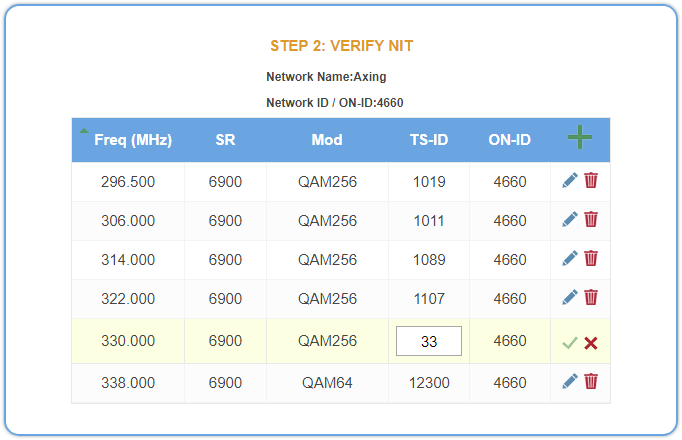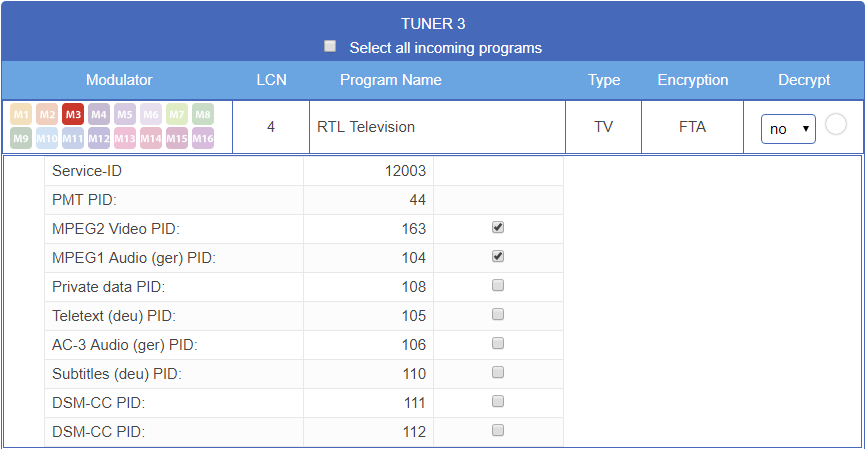11 May 2018 | We offer two extensions for individual adjustment of our new headend generation (series MK XX-0X and SKM XX-oX): The MKS 1-00 extension generates a NIT table, the MKS 1-01 enables PID filtering. The AXING Support will install both extensions on customer request. Both software functionalities are explained in detail below:
NIT – Network Information Table
With the software extension MKS 1-00, a NIT (Network Information Table) can be read out of the devices, edited and uploaded back into the devices. The NIT Network Information Table transmits a series of parameters in the digital data stream that are necessary for a scan of the receivers. The specific parameters within the NIT, such as ONID – Original Network ID and TS-ID – Transmitting Subscriber ID, can each be configured. In addition, transmission parameters can be added and changed manually from other AXING headends as well as from headends of other manufacturers. This makes it easy to manage the receivers’s channels at the headend. The channel searching procedure will be faster and more reliable.
NIT editing
The LCN (Logical channel numbering) is also located within the NIT, which enables virtual channel list assignment for TV/radio programmes. Receivers which support LCN sort the program automatically after running a search process. With the MKS 1-00, synchronization is also possible if several headends are used. Within the cable network, the user always finds a program on the same program position.PID – Packet Identifier
Each digital data stream (transport stream) is composed of several elementary streams, each elementary stream having its own identifier, the so-called PID. An elementary stream can be a video, audio or data stream. Some transport streams contain several audio languages (audio PIDs), for example.
PID filtering
If not all channel data streams are required due to the application, PID filtering is possible with the software extension MKS 1-01. All existing PIDs of a transport stream are listed, which can then be selected individually. For example, you can suppress audio PIDs with foreign language sound channels or AC-3 surround sound. Teletext can be excluded for use in a correctional facility. If PIDs are deselected, the transport stream is marked as modified and this particular stream element is no longer transmitted. This reduces the overall data rate of a transport stream, resulting in a lower bandwidth. This can become important for conversion from DVB-S to DVB-T, since a DVB-T channel has a lower data capacity. Data rate can be “saved” by filtering. Furthermore, the SIDs (Service ID) can be reassigned via this function with the software extension MKS 1-01.
Advantages:
-
Generate a common NIT, speed up and simplify the program search of the receivers
-
Allows a channel list assignment via LCN for all receivers using multiple headends
-
PID filtering meets operator requirements (e.g. exclusion of teletext)
-
Offers full control over the services in the cable network


